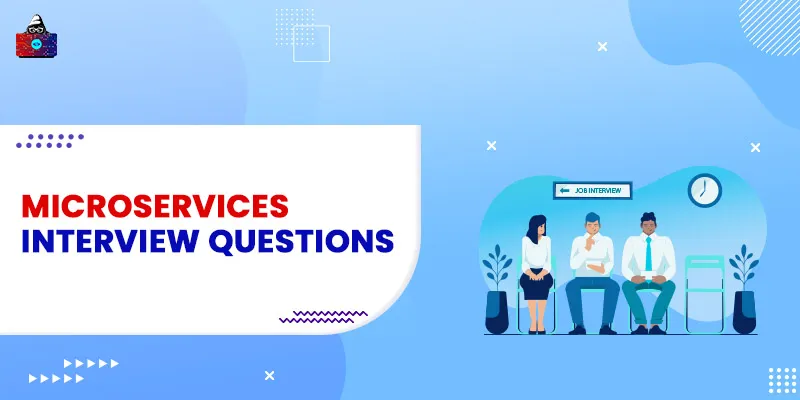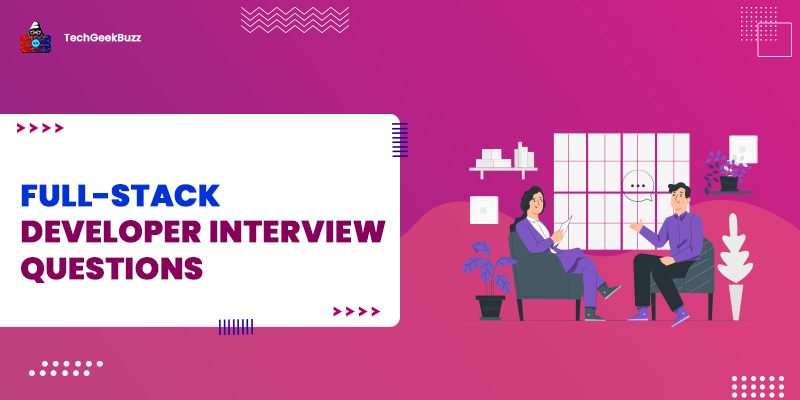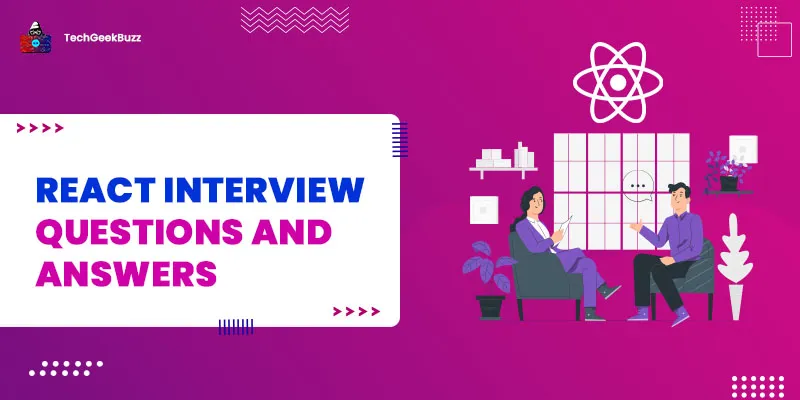Microservices, also known as Microservice architecture, is an architectural style for developing software applications, where applications are composed of small independent services. These services are loosely coupled, independently deployable, highly maintainable and testable, and centred on business capabilities. Also, these services communicate with each other using well-defined APIs.
The microservice architecture enables development teams to build scalable and distributed systems. Also, it ensures frequent and reliable delivery of large and complex applications. This architecture considers each service of an application as an independent service and makes it possible to modify, take out, and update any service without affecting the entire application.
With a monolithic architecture, it becomes extremely challenging to add any new feature to an application. This is so because the monolithic architecture requires us to update and reconfigure everything within an application, which is a very cumbersome process. Also, all the services of an application built using the monolithic architecture are tightly coupled and run as a single service.
Microservices overcomes all these issues of monolithic architecture. Many enterprises have moved from monolithic architecture to microservice architecture due to the extraordinary benefits offered by the latter. Some renowned companies like Amazon, Twitter, Meta, Netflix, etc., make use of microservices to develop scalable applications.
If you plan to appear for an interview for a Microservices developer job, this article will be of great help. It covers a list of the frequently asked Microservices interview questions that you can go through to give your best shot in the next interview.
50 Top Microservices Interview Questions and Answers
Here is the curated list of Microservices interview questions, along with their detailed answers. We have divided the interview questions into three levels, namely beginner-level, intermediate-level, and advanced-level.
Microservices Interview Questions and Answers For Freshers
1. What do you understand about microservices?
Microservices or Microservice architecture is a software development approach for developing applications as a collection of small independent services or functional modules. These services or functional modules can communicate with each other using lightweight and well-defined APIs. Since all services of an application run independently, we can update or delete any service without affecting the entire application. In addition, we can even add any new service to an application with ease.
2. State some characteristics of microservices.
The following are some significant characteristics of microservices:
- Services in an application developed using microservices are independent and loosely coupled.
- The commonly used interaction between services of an application are messaging, HTTP, and REST.
- JSON and REST are ideal for service communication in microservices.
- Each service in microservices can be developed, deployed, operated, and scaled independently without affecting other services of an application.
- Microservices ensures frequent software releases by automating software development testing.
3. List out the benefits of microservices.
The following are the benefits of microservices:
- Agility: Microservices encourages an organization with small teams to work independently and quickly to build applications. Working independently on different areas of an application shortens the duration of the development cycle.
- Easy Deployment: Continuous integration and continuous delivery has become possible due to microservices. Therefore, we can try to implement new functionality or service in an application and undo it if it doesn’t work.
- Technological Freedom: Microservices offer software development teams to choose the most suitable tool to implement any functionality or solve any specific problem. It does not follow a ‘one size fits all approach.
- Reusable code: As all services of an application are independent, we can reuse the code of any service to develop other features.
- Resilience: In a microservice architecture, the failure of a single service does not fail in an entire application.
4. List out the drawbacks of microservices.
The following are some downsides of microservices:
- Communication between multiple services of an application can be challenging and complex.
- Debugging is quite challenging with microservices.
- Performing integration testing is difficult with microservices.
- It is relatively more expensive than monolithic architecture.
- Skilled and proficient developers are required to work with microservices who can manage the communication between services.
5. What do you understand about monolithic architecture?
We can view monolithic architecture as a big container, where all components of an application are tightly coupled, and each component is dependent on other components. Monolithic applications have one large code-base and lack modularity. Since all components of a monolith application are dependent on each other, any modification in a single component requires rewriting the whole application. Also, any failure in a single component fails in an entire application.
6. Explain the difference between monolithic and microservice architecture.
The following table describes the key differences between monolithic and microservice architecture:
| Monolithic Architecture | Microservice Architecture |
| Monolithic architecture is a traditional software development approach for building applications, where all the components of an application are tightly coupled and dependent on each other. | Microservice architecture is an architectural approach for developing software applications as a collection of small, independent, and loosely coupled services. |
| The failure of a single component of a monolithic application may bring the entire application down. | The failure of any service or functional module of an application does not affect other services. |
| We need to redeploy an entire application in case of a small change in any component. | In case of any change in any of the services of an application, we just need to redeploy that particular service. |
| Monolithic applications are simple and easy to develop. | Applications developed using the microservice architecture are complex, and the complexity increases as the number of services increases. |
7. List out some significant components of microservices.
The following are the significant components of microservices:
- Containers, Clustering, and Orchestration.
- Infrastructure as Code Conception (IaC).
- Cloud Infrastructure.
- API Gateway.
- Enterprise Service Bus.
- Service Delivery.
8. What are some common tools used for microservices?
There are three common tools used for microservices that are as follows:
- Wiremock
- Docker
- Hystrix
9. What do you understand about SOA?
SOA stands for Service-oriented Architecture. It is a style of software design where application components provide services to other components via a communication protocol over the network. The service-oriented architecture integrates several software components that have been developed and deployed separately. Also, the components can communicate with each other and work together to form software applications across different systems.
10. Explain the difference between SOA and microservice architecture.
The below table highlights the key differences between SOA and microservice architecture:
| Service-oriented Architecture | Microservice Architecture |
| SOA primarily focuses on maximizing application service reusability. | The microservice architecture focuses on decoupling services. |
| It follows the ‘share-as-much-as-possible’ approach. | It follows the ‘share-as-little-as-possible approach. |
| SOA is designed to share resources across services. | The microservice architecture is designed to host services that can function independently. |
| Software components communicate through Enterprise Service Bus (ESB). | Application services communicate through well-defined APIs. |
| It is a less scalable architecture. | It is a highly scalable architecture. |
11. What do you know about Spring Boot?
Spring Boot is an open-source Java-based framework that allows developers to build stand-alone and production-grade Spring-based applications. It is built on top of the Spring Framework and provides the Rapid Application Development (RAD) feature to the Spring framework.
Most applications developed using the Spring Boot framework require minimal Spring configuration. In short, we can state that Spring boot is the combination of the Spring framework and embedded HTTP servers, like Tomcat, Jetty, etc., without the requirement for XML configuration.
12. What do you know about Spring Cloud?
Spring Cloud provides tools for creating some common patterns in a distributed system. These common patterns are:
- Configuration management
- Service discovery
- Cluster state
- One-time tokens
- Global locks
- Distributed sessions
- Control bus
- Micro-proxy
- Intelligent routing
- Circuit breakers
- Leadership election
Developers can use Spring Cloud to develop applications and services quickly that implement those patterns.
13. Can you explain the Spring Boot Actuator?
Spring Boot Actuator is a sub-project of the Spring Boot framework that brings production-ready features to an application. It contains actuator endpoints where resources reside. Also, the endpoints help developers manage and monitor a Spring Boot application. We can use HTTP and JMX endpoints to manage and monitor a Spring Boot application.
14. Can you override the default properties of the Spring Boot project? If yes, how?
Yes, we can override the default properties of the Spring Boot project. We can do it by specifying those default properties of the Spring Boot project in the application.properties file.
15. What are the challenges of working with the Microservice architecture?
The following are the challenges associated with the Microservice architecture:
- As services of an application developed using the Microservice architecture are independent of each other, communication between these services is one of the most significant challenges.
- Automating components is another major challenge since we need to build, deploy, and monitor every component of an application.
- Debugging and testing become difficult.
- Microservices require a huge investment and heavy infrastructure setup.
Intermediate Microservices Interview Questions
16. Can you tell different strategies used in Microservices deployment?
The following are the strategies used in Microservices deployment:
- Multiple Service Instance per Host: Runs single or multiple service instances of an application on single or multiple virtual or physical hosts.
- Single Service Instance per Host: Runs a single service instance of an application individually on its host.
- Single Service Instance per Container: Runs a single service instance in its respective container.
- Serverless Deployment: A service of an application is packed as a ZIP file and uploaded to the Lambda function.
17. What do you understand about Domain-Driven Design?
A domain-driven design is a software design approach based on object-oriented analysis and design concepts. This approach focuses on developing a domain model that has a rich understanding of the processes and rules of a domain. It aims to ease the development of complex applications by interconnecting the related pieces of an application into an ever-evolving model.
In terms of building applications, a domain-driven design considers a problem as a domain. DDD describes independent problem areas as Bounded Contexts, where each bounded content is correlated to a microservice. Also, it uses a common language to discuss these problems.
18. State the three principles of domain-driven design.
The following are the three principles of domain-driven design:
- Focus on the core domain and domain logic.
- Build complex design on the models of the domain.
- Consistently collaborate with domain experts to improve the application model and resolve domain-related issues.
19. State the advantages of domain-driven design.
The key advantages of the domain-driven design are:
- Better Communication: The domain-driven design approach concentrates on developing a ubiquitous language associated with the domain model of a project. Therefore, developers and business teams can have better communication and understanding while collaborating.
- Improved Flexibility: Since domain-driven design is based on Object-Oriented Analysis and Design concepts, everything within the domain model will be based on objects, making an application modular. Therefore, various components of an application can be modified and improved as per the requirements.
- Better code: The use of the domain-driven design approach results in a cleaner and more reliable code since it follows the concepts of object-oriented analysis and design.
20. Explain three types of tests used in Microservices.
The tests used in Microservices are divided into three categories, as explained below:
- Bottom Level Tests: This level of tests include general tests, such as the performance test and unit test, and they are entirely automated.
- Middle-Level Tests: This level of tests includes exploratory tests, the stress test, and the usability test.
- Top Level Tests: This level of tests include acceptance tests.
21. What do you understand about client certificates?
A client certificate is a digital certificate used by client systems to make authorized requests to a remote server. It validates the identity of a user or client. Also, it ensures that the server is communicating with an authorized user.
22. Can you explain the use of PACT in Microservices architecture?
PACT is an open-source tool for testing interactions between service providers and consumers. Alternatively, we can define PACT as a code-first tool for testing HTTP and message integrations using contract tests. In general, contract tests claim that inter-application messages comply with the shared understanding documented in a contract. PACT supports various languages, such as Ruby, Java, .NET, JavaScript, Scala, and Swift/Objective C.
23. What do you understand about OAuth?
OAuth stands for Open Authorization. It is an open-standard protocol that allows websites or applications to access resources from other websites or applications on behalf of a user. OAuth enables us to access client applications on HTTP for third-party providers, like GitHub, Facebook, etc.
24. Name some embedded containers supported by Spring Boot.
Spring Boot supports the following embedded containers:
- Tomcat
- Undertow
- Jetty
25. What is end-to-end Microservices testing?
End-to-end testing in Microservices ensures that every process in the workflow is functioning properly. Also, it ensures a system is working correctly as a whole and is meeting all the requirements.
26. Can you tell which problems Spring Cloud can solve?
Using Spring Cloud, we can solve:
- Network issues, latency overhead, security issues, bandwidth issues, and many other issues occurring in distributed systems.
- Redundancy issues in distributed systems.
- Performance issues that occur due to operational overhead.
- Service discovery issues to enable smooth communication between services.
27. State the benefits of using API Gateway in Microservices.
The following are the benefits of using API Gateway in Microservices:
- API Gateway separates internal Microservice APIs from external APIs.
- It adds an additional layer of security to Microservices.
- API Gateway supports using various communication protocols in Microservices. These protocols include ProtoBuf, AMQP, SOAP, JSON-RPC, or XML-RPC.
- The separation of Microservice APIs from external APIs enables us to virtualize services to validate design requirements or assist in integration testing.
28. What different tools can you use to automate the development of Microservices?
We can automate Microservices from development to production. The following are the automation tools used for automating different tasks involved in the development of Microservices:
- Jenkins for continuous integration.
- Git for version control.
- Selenium and JUnit for testing.
- Container technologies, like Docker , will be used with release management tools, like Chef or Puppet, for infrastructure management automation.
- Spring Cloud or Kubernetes for deployment automation.
29. What is Kubernetes?
Kubernetes is an open-source container orchestration system that automates application scaling, management, and deployment. It supports various container runtimes, like Containers, Docker, and CRI-O.
Advanced Microservices Interview Questions and Answers
30. What do you understand about Cohesion?
We can define cohesion as the degree to which elements or parts of a module belong together. In other words, cohesion measures how deeply elements or parts of a module relate to each other.
31. What do you understand about Coupling?
We can define coupling as the measure of the strength of dependencies between components of a software application. Alternatively, we can define coupling as the relationship between software modules and how much one module is dependent or interacts with another module. Software modules can be highly-coupled, loosely coupled, and uncoupled.
32. Explain two message patterns used by microservices to communicate with other microservices.
The following are the two message patterns used by microservices to communicate with other microservices:
- Synchronous communication: In this pattern, a service uses an HTTP or gRPC protocol to call an API that another service exposes. Here, a caller has to wait for a response from the receiver.
- Asynchronous communication: In this pattern, a service sends a message without waiting for a response. This message is then processed by one or more services asynchronously.
33. How can independent microservices communicate with each other?
The communication between microservices takes place through:
- HTTP/REST with JSON or binary protocol for request-response.
- Websockets for streaming.
- A broker or server program. We can use RabbitMQ, Nats, Kafka, etc., as message brokers to handle message semantics.
34. What do you mean by semantic monitoring?
Semantic monitoring or synthetic monitoring is a method that runs the subset of automated tests of an application against the live production of an application regularly. The results are then fed to the monitoring service, which provides alerts in case of failures. In short, we can say that semantic monitoring combines automated testing with monitoring to identify errors in business processes.
Moreover, semantic monitoring offers a deeper insight into service availability, transaction performance, and overall performance of an application with an aim to:
- Identify performance issues of microservices.
- Catch bugs in transactions.
- Provide a high level of overall performance.
35. What do you understand about continuous monitoring?
Continuous monitoring is a process of identifying risks and compliance issues associated with the financial and organizational environment of an organization. An organization’s financial and organizational environment can be thought of as people, processes, and systems working together to support efficient operations. With continuous monitoring, we can identify suspicious network activity that could lead to a security breach.
36. What is Continuous Integration?
Continuous integration is a software development practice where multiple developers merge or integrate their code changes to a shared repository, after which automated builds and tests are run. The primary goal of continuous integration is to address or detect bugs quickly, enhance the software quality, and reduce the time required to validate and release new software updates.
37. What do you know about Idempotence and its use?
We can define idempotence as a property of being able to do something repetitively in such a way that the end outcome is the same. One of the best uses of Idempotence can be observed at the remote service or data source. When the remote service or data source requires a single instruction more than once, Idempotence ensures that the instruction is implemented only once.
38. What do you understand about a Consumer-Driven Contract?
A consumer-driven contract (CDC) is an approach that ensures service communication compatibility. Here, a consumer and a provider agree on the data format that they should use. This agreement is referred to as a contract. A consumer is responsible for defining the format of the contract and sharing it with the corresponding provider.
39. Tell something about Mike Cohn’s Test Pyramid.
Mike Cohn’s Test Pyramid defines the various kinds of automated tests required for software development. It is used to maximize automation at all levels of testing. The test pyramid describes three levels of test automation, where the base level has unit tests, the middle level has service and API tests, and the top-level has user interface-level tests.
40. Explain the use of containers in Microservices.
We can use a container to run anything, ranging from a small microservice or software process to large applications. A container consists of everything essential for running an application. It contains configuration files, binary code, libraries, and executables. Containers are considered one of the most excellent ways of developing and deploying microservice-based applications.
A container enables us to develop and deploy microservices individually. Also, we can use Docker to encapsulate a microservice, along with its dependencies in the image of the container. And later, introduce the desired instances of that encapsulated microservice without any additional effort.
41. What do you understand about the Tasklet in Microservices?
We can define a tasklet as an interface with just one method. We use it to carry out single tasks in one step, such as running queries, deleting files, etc. A tasklet in Spring Batch is an interface with which we can perform unique tasks, like cleaning or setting up resources before or after the execution of any step.
42. What is Eureka in Microservices?
Eureka or Eureka Server is an application that stores information about all client-service applications. Every microservice has to register with the Eureka server. This server registers client services with their port numbers and IP addresses. We also refer to Eureka as the Discovery Server.
43. What do you understand about Canary Releasing?
Canary releasing, also known as canary deployment, is a deployment pattern that focuses on introducing a new feature or an updated version of a service or an application to a small set of users rather than introducing it to all users. In other words, canary releasing is a deployment scheme in which an application or service is released incrementally to a small subset of users. We can think of a canary release as an initial test without exposing the entire infrastructure of a software product to all the users.
44. Can you explain the need for Reports and Dashboards in Microservices?
Reports and dashboards in Microservices are used to monitor microservices. They are used to determine the resources of microservices, identify services that get impacted after making a change in a particular software component, and provide information about different versions of the deployed components.
45. Explain two-factor authentication.
As its name suggests, two-factor authentication is a security system that employs two different forms of identification to give a user access to something. Though two-factor authentication improves security, it is not foolproof. It would be a single-factor authentication if we had to enter only the username and password fields at the time of login. We need to enter more information other than username and password in two-factor authentication.
The three types of credentials in two-factor authentication are as follows:
-
Something you
- know: We need to enter either a PIN, password, or pattern.
- have: We need to enter a phone number or OTP received via email.
- are: It involves a biometric fingerprint or voice print.
46. Can you use Spring Cloud to balance the server-side load?
Yes, we can use Spring Cloud to balance the server-side load. To do so, you can use Netflix Zuul, a gateway service that provides monitoring, security, dynamic routing, etc.
47. How can you implement Spring Security in a Spring Boot Application?
We can implement a Spring Security in a Spring Boot Application in the following two ways:
- By adding the spring-boot-starter security in the pom.xml file.
- By creating a Spring config class that will override the required method by extending the WebSecurityConfigurerAdapter class.
48. What do you understand about the Ubiquitous language?
Software developers and domain experts may face a lot of communication barriers while defining a software model. A Ubiquitous language (UL) is a model that acts as a universal language for the communication between software developers and domain experts. This language is associated with the Domain-Driven Design and should be based on the domain model used in a software application. It acts as a medium to connect all activities of a software development team.
49. Tell me how to configure the Spring Boot application login.
We can configure the Spring Boot application login by specifying the logging.level in the application.properties file.
50. What do you understand about Reactive Extensions in Microservices?
Reactive extensions also called Rx is a design approach that enables us to call multiple services, collect their results or responses, and compile the combined result or response. The calls to services can be synchronous or asynchronous and blocking or non-blocking.
Conclusion
The Microservice architecture is an approach to software development where a software application is developed as a collection of services that work independently and are loosely coupled. It has gained massive popularity and has been adopted by many renowned organizations due to its benefits.
Through this article, we have made you familiar with the frequently asked Microservices interview questions and their answers. We hope that by going through these questions, you will be able to prepare yourself better for your upcoming Microservices developer job interview.
Good Luck!
People are also reading:





Leave a Comment on this Post